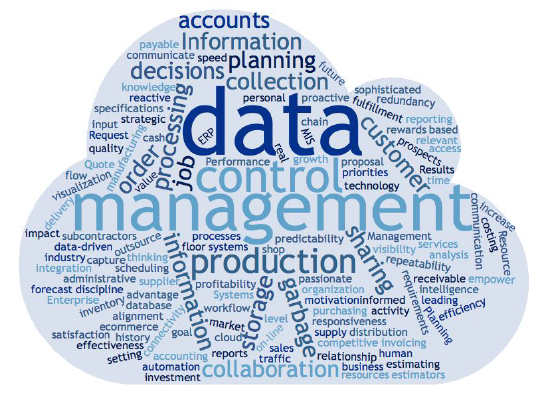
Features
Business
Management
Sales
Manage with data: Providing some tools for empowerment
February 23, 2021 By Bob Dale and Gary Forget

Successful change management is the greatest challenge for most companies, regardless of size. Whether it is onboarding a new client or implementing a new Enterprise Resource Planning (ERP) system or Management Information System (MIS), change management is critical.
Implementing a new ERP system is one of the most challenging and disruptive changes that can be done. If it is not done right, it can have a devastating impact.
Change management is a science and requires dedicated effort and experienced project management disciplines in order to be successful. It is the process, tools and techniques to manage the people side of change that achieves the required business outcome. Today, we want to focus on one company that has successfully implemented a new ERP system.
Leadership – Hands-on approach
Richard Kouwenhoven is president and COO of Hemlock Printers in Burnaby, BC. Based on some points made at a recent Industry Leaders forum, here are some insights he shared during a recent interview.
In 2016, Hemlock identified the need for a new ERP system and had a number of specific requirements. One area of focus was the effective use of data to empower the business development efforts of the company’s sales team. In Richard’s words, he wanted to, “expand their role from hunter-gatherer to services provider.” After looking at a number of options, they realized they needed to focus on the reporting power of an ERP system. Given the rapid changes in technology and software, they believed they could empower people to use the new tools they were acquiring.
Their technology focus led them to a new ERP system, which had to meet several criteria, the most important being ease of use and the utility of the reports to the employees.
Leadership – Empower your employees
Since it was an ERP, it had to have connectivity across all processes, integrate all applications end to end and help transition to a more participative culture. As a result, with tools that empower the employees, performance management is quite different with such a system in place.
With the transition affecting everyone, the impact on people needed to be the key focus, not the technology and equipment. Richard ensured everyone understood why the change was necessary and the benefits from all perspectives.
The senior management team invested a significant amount of time into the process. Similarly, they asked their employees to commit to learning and using the tools. With younger employees, the need to share goals and involve the team early on was apparent. Whether it was one-on-one or in town hall meetings, personal, interpersonal and formal means were used to manage through the changes.
What are the notable differences? On the employee side, personal growth has expanded. Everyone participates in strategic goal setting and the reports available online give them real-time access to their status and much greater visibility into what’s going on throughout various departments.
The sales staff now have relevant data on prospects and clients, sophisticated reports with real time charts and diagrams. Simpler jobs can be estimated by the sales staff, providing faster customer response, and freeing up the estimators to focus on more complex projects.
A word of caution to those who make major change initiatives: focus on the people side of change, and ensure that the leadership team remains involved. We wish you continued success!
Bob Dale and Gary Forget are with Connecting for Results Inc. Their focus is to facilitate mergers and acquisitions that maximize results for all parties, and provide recruitment and consulting services. They can be contacted at info@connectingforresults.com or visit https://connectingforresults.com.
This article was originally published in the November 2020 issue of PrintAction.
Print this page